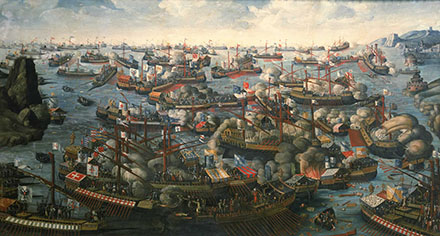From Henry-Clement Sanson‘s memoirs:
On May 22 the scaffold was again erected for the execution of an Italian, a native of Rome, named Antonio Brochetti. He was imprisoned at Bicetre at the time of the murder, he having been previously sentenced to hard labour for life. He killed one of the turnkeys, with no other object than putting an end to his own life. Life in a prison or in the hulks seemed to him a much more severe punishment than death. His wish was fulfilled; he was condemned to death, and executed on the Place de Greve five days after, at four o’clock in the afternoon.
He went to the scaffold with eagerness. “I would rather die a thousand times than go to the hulks!” he exclaimed several times. Since Brochetti’s execution the severity displayed in French penitentiaries has increased; and his example has been followed by many.
“Galley slavery” in the antique Ben-Hur sense had been a mainstay of European navies since France got the bright idea to address a shortage of oarsmen by making press gangs out of magistrates. This idea was widely copied, and intensified.
At their peak in 1690, French galleys had 15,000 under oars — captured Turks, defeated Huguenots, slaves seized from Africa and North America, and, of course, criminals or anyone who could be construed as such.
Yet even by this time the galley was virtually obsolete as a military asset; Paul Bamford argues that they were maintained for pageantry and (internal) state-building for the French crown. Thus, as the 18th century unfolded, “galley” slaves were increasingly used for hard labor on the docks and in the arsenals — still-brutal punishment in a similar spirit, but no longer literally pulling an oar. By 1748, they were at last formally subsumed into a network of port prisons.
By this late date, however, usage had established the word galérien for convict galley-slaves so firmly that it persisted even now with the new redefinition.** (Italian still to this day has la galera for prison: the acme of seagoing Italian city-states coincided with that of the galley.)
* Lionel Casson (in “Galley Slaves” from the Transactions and Proceedings of the American Philological Association, vol. 97 (1966)) dates this to a January 22, 1443 edict of Charles VII conferring on merchant Jacques Coeur the right to impress vagabonds into his fleet.
** Victor Hugo’s Jean Valjean (Les Miserables) was a galley-slave; he would have been by Antonio Brochetti’s time just a few years out of the galleys himself.
On this day..
- 2002: Johnny Joe Martinez - 2020
- 1538: John Forest and the image of Saint Derfel Gadarn - 2019
- 1918: Edla Sofia Hjulgrén, Finnish parliamentarian - 2018
- 1889: Fulgence-Benjamin Geomay, at the Paris Exposition - 2017
- 1916: Four French soldiers of the 96 RI - 2016
- 1929: Nikolaus Karlovich von Meck, wrecker - 2015
- 1942: Stjepan Filipovic, "death to fascism, freedom to the people!" - 2013
- 1856: Casey and Cora, by the San Francisco Vigilance Committee - 2012
- 2001: Terrance Anthony James, snitch-killer - 2011
- 1393: The Muzaffarids, by Timur - 2010
- 1946: Karl Hermann Frank - 2009
- 1833: Midgegooroo, Noongar rebel - 2008

